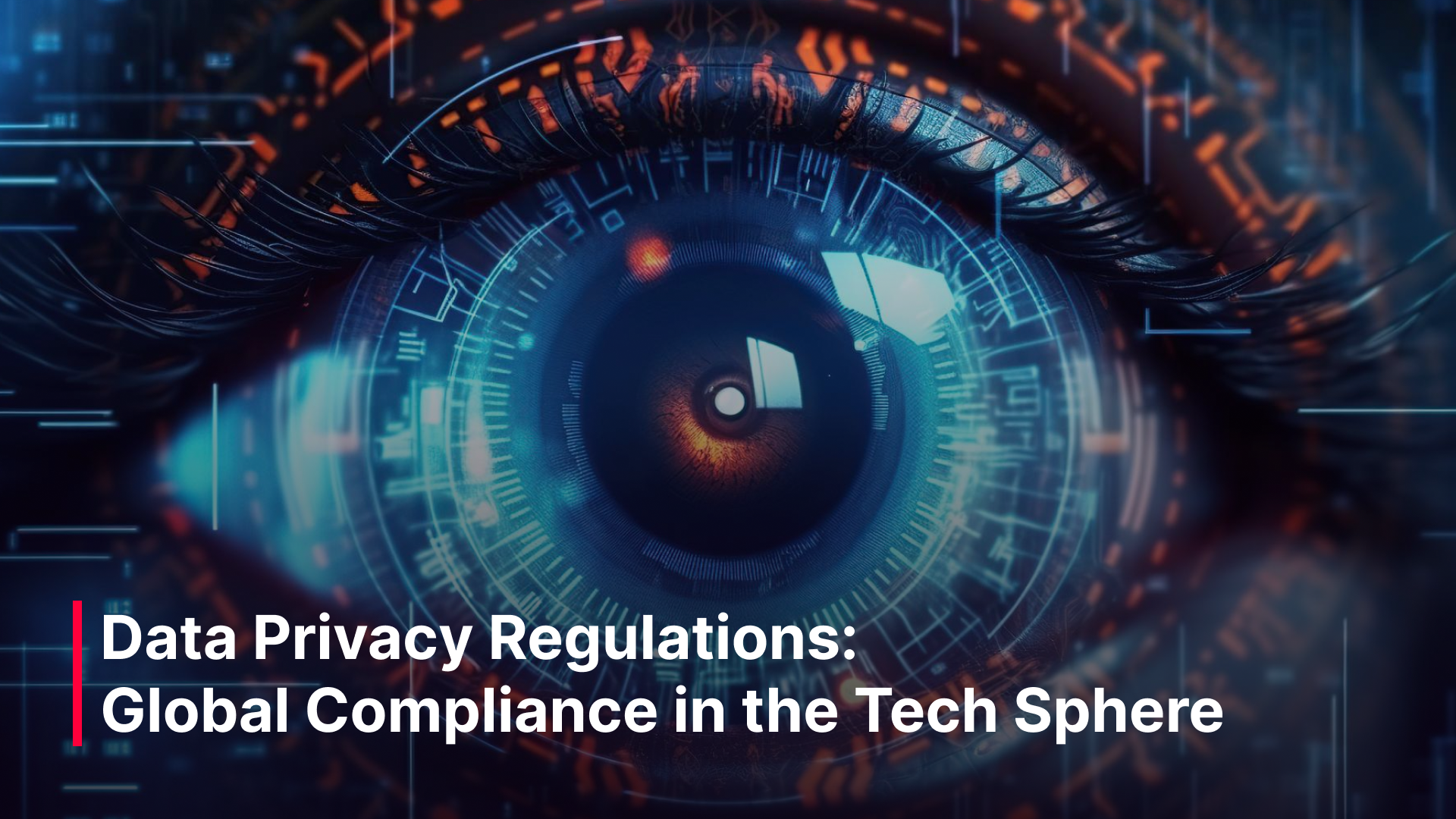Data privacy is an increasingly relevant concern for tech companies operating globally. Tech builders have to navigate the landscape of data privacy regulations, which proves to be essential for maintaining trust and compliance. So let’s explore together key global data privacy regulations, their impact on the tech industry, and strategies for ensuring compliance.
Understanding Key Data Privacy Regulations
As tech solutions become more widespread, the importance of safeguarding user data cannot be overstated. Regulations like GDPR, CCPA, and APPI are not just legal requirements but foundational principles that shape how data should be handled, stored, and protected. This is especially true as tech is more and more commodified and embedded into our everyday lives.
For developers, compliance with these regulations means building systems with privacy at their core. This involves implementing robust security measures, ensuring transparent data handling practices, and fostering user trust. By prioritizing data privacy from the outset, developers can create technology that meets regulatory standards while also setting a benchmark for ethical and responsible data use. Understanding these regulations helps developers anticipate potential legal challenges and align their innovations with global standards, ultimately leading to more secure and trustworthy technology solutions.
GDPR (General Data Protection Regulation)
The GDPR, enforced in the European Union since 2018, is one of the most comprehensive data protection laws globally. It sets strict guidelines for data collection, processing, and storage, with significant penalties for non-compliance. Companies must obtain explicit consent from individuals before collecting their data, ensuring transparency and accountability. Individuals have the right to access their data and understand how it is being used, promoting trust between consumers and businesses. The regulation also introduces data portability, allowing users to transfer their data between service providers. Additionally, individuals can request the deletion of their data, reinforcing their control over personal information.
CCPA (California Consumer Privacy Act)
The CCPA, effective from January 2020, enhances privacy rights for residents of California. It includes provisions such as the right to know what personal data is being collected and how it is used. Consumers can request the deletion of their data, providing a safeguard against misuse.
The right to opt-out allows consumers to prevent the sale of their personal data, protecting their privacy. But more importantly, the CCPA ensures that consumers cannot be discriminated against for exercising their privacy rights, fostering a fair and transparent data environment.
APPI (Act on the Protection of Personal Information)
Japan’s APPI, amended in 2020, aims to align with global standards like GDPR. It requires explicit consent for processing sensitive data, ensuring that individuals are fully informed about how their data is used. Organizations must notify individuals of data breaches, promoting transparency and accountability. The APPI encourages data anonymization, enhancing privacy protection while enabling data utilization for beneficial purposes.
Challenges and Strategies for Compliance
Navigating different data privacy laws across jurisdictions can be complex, especially as regulations evolve. Each region may have its unique requirements, such as the GDPR in Europe or the CCPA in California, each with specific rules about data collection, storage, and user consent. For tech developers, this means that what is compliant in one region might not be in another, necessitating a deep understanding of multiple regulatory frameworks.
Some laws require data to be stored within the country, adding complexity to data management. This data localization can affect the architecture of cloud services and data centers, forcing companies to maintain separate infrastructures for different regions. For instance, developers must ensure that personal data collected in Europe under GDPR guidelines remains within the EU, complicating global data operations.
To navigate these challenges, regular audits are essential. These audits help understand what data is collected, where it is stored, and how it is used, ensuring compliance with all relevant regulations. Conducting these audits regularly allows organizations to stay ahead of compliance issues and adjust practices as necessary.
Collaboration between legal, IT, and compliance teams is crucial to cover all aspects of data privacy comprehensively. Legal teams can interpret the regulations, IT can implement the necessary technical controls, and compliance teams can ensure that all practices align with legal requirements. This cross-functional collaboration ensures that all perspectives are considered and that compliance is maintained across the organization.
Implementing robust encryption methods protects data both at rest and in transit, enhancing security. Encryption ensures that even if data is intercepted or accessed without authorization, it remains unreadable and secure. Developers should integrate strong encryption protocols into their systems and regularly update them to counter emerging threats.
Integrating privacy considerations into the development process of new products and services ensures compliance from the ground up. This approach, known as privacy by design, involves incorporating data privacy features into the initial design phases, rather than as an afterthought. It includes practices such as minimizing data collection, anonymizing data wherever possible, and ensuring user consent is clearly obtained and documented.
Clear communication about data handling practices helps users understand their rights and the measures taken to protect their data. This transparency builds trust and helps users feel more secure about sharing their personal information. Developers should ensure that privacy policies are easily accessible, clearly written, and regularly updated to reflect current practices and regulations.
By addressing these challenges and implementing these strategies, tech developers and builders can create systems that not only comply with global data privacy regulations but also foster trust and security among users. At Bytex, we understand the intricacies of data privacy and are committed to helping our clients navigate this complex landscape, ensuring their solutions are both innovative and compliant.
The Role of Technology in Compliance
Leveraging advanced technological tools can streamline compliance processes, reduce the risk of human error, and enhance overall data security. For tech developers, understanding and implementing these tools is essential to meet regulatory requirements and protect user data.
Automation, AI, and blockchain are some of the key technologies driving compliance today. Automation tools can handle routine compliance tasks, freeing up human resources for more complex issues. AI and machine learning algorithms can detect anomalies and potential breaches in real-time, allowing for swift action to mitigate risks. Blockchain technology offers transparent and immutable records, ensuring data integrity and trustworthiness.
By integrating these technologies, developers can create robust systems that not only comply with regulations but also set new standards for data privacy and security.
The power of tech is that it enables a proactive approach to compliance, rather than a reactive one. By continuously monitoring data flows and access points, tech solutions can preemptively identify and address vulnerabilities.
For instance, automated compliance tools can regularly update privacy settings and access controls to align with the latest regulatory changes. This proactive stance not only ensures ongoing compliance but also reinforces user trust by demonstrating a commitment to data protection. For tech developers, embedding these technologies into their systems is critical for maintaining a secure and compliant data environment.
Conclusion
Navigating the global landscape of data privacy regulations is a significant challenge for tech companies – the more global the company, the bigger the challenges. However, with a proactive approach and the right strategies, businesses can ensure compliance, protect user data, and build trust. At Bytex, we are committed to helping our clients stay ahead of the curve in data privacy and security, leveraging our expertise to craft superior digital experiences that are both innovative and compliant.


